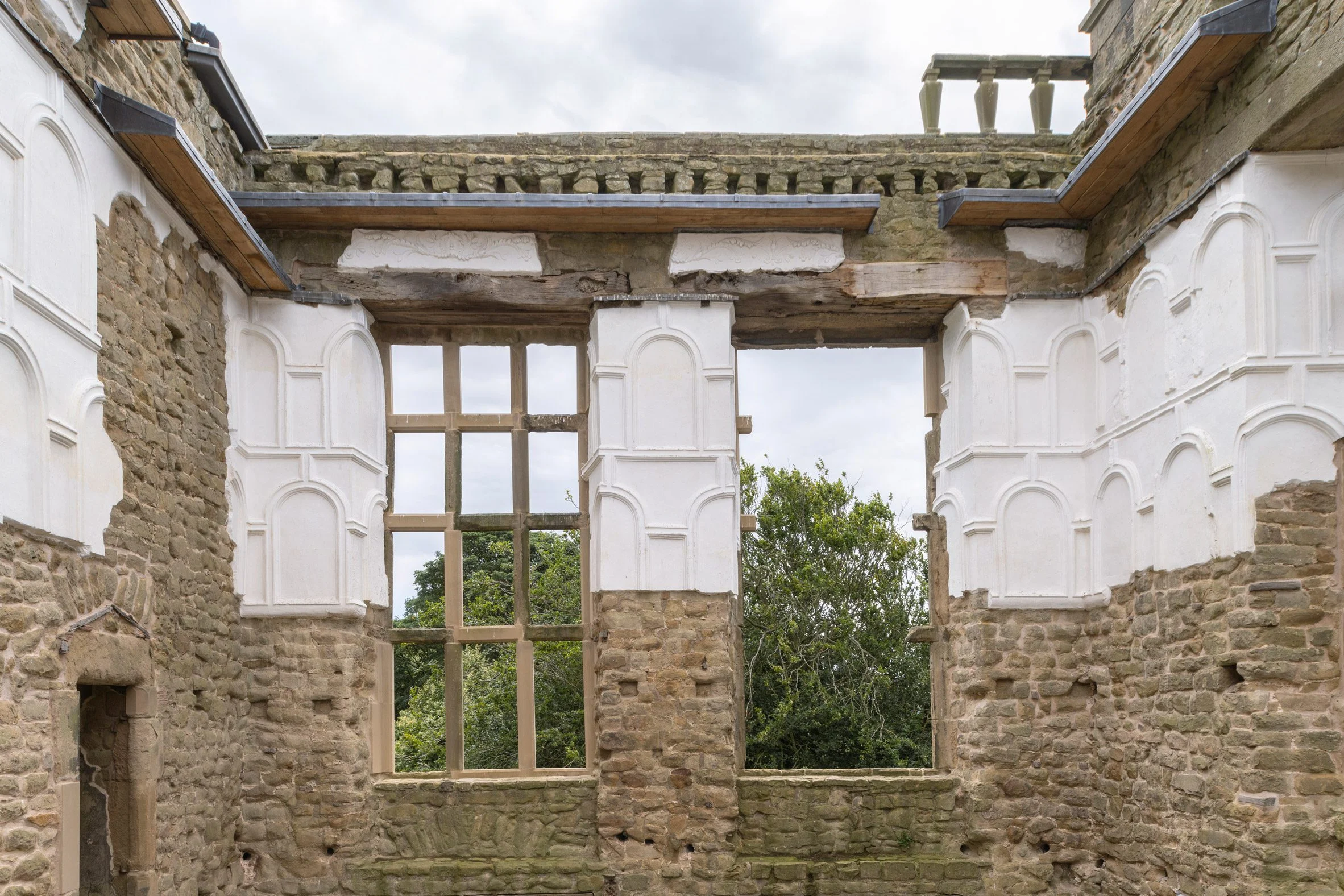Hardwick Old Hall - Winner of Exemplary Conservation Project or Group Skills
- Admin
- Dec 21, 2023
- 3 min read
DHBT Architecture Awards 2023
Exemplary conservation project or group skills
Winner: Hardwick Old Hall National Trust Hardwick & Stainsby Mill
Architect: Donald Insall Associates
Client: English Heritage
Before photographs
Hardwick Old Hall was a Great Elizabethan Country House largely constructed between 1587 and 1597. It now stands as a romantic ruin in the grounds of Hardwick Hall. The site is Grade I listed and a Scheduled Monument.
The site was closed to the public for 3 years due to stone and plaster falls found across the site. Insall won a competition in 2020, put out by English Heritage, to work on the project.
The project brief was to bring the site back into a state of repair that would allow it to be open to the public again while applying Sustainable Conservation Principles to the repair works across the site under Sustainable Conservation Strategy & Asset Management Plan (SCAMP) principles.
SCAMP is English Heritage’s sustainable approach to conservation that looks to bring property maintenance into a steady state that can be maintained. The main objectives were to arrest accelerated decay mechanisms, make the site safe and minimise future maintenance.
Insall first reviewed all the documentation and history that was available to get a full understanding of the site. They then carried out a full condition survey of the entire site over 5 days to gain full understanding of the condition and the active decay mechanisms that were affecting the site.
A feasibility study looked at new roofs and reinstatement of features to better protect the historic fabric.
Only the highest priority conservation repairs and some radical interventions were taken forward into the project. The chosen proposals were prioritised to high level areas, difficult to maintain areas, decay that might cause continued health and safety concerns and to arrest harmful active decay mechanisms affecting the most significant elements of the site. This resulted in a significant conservation and repair project that was carried out from 2021-2023 over three phases with a value of £1.3m.
Conservation and Repair
The proposed repairs that were taken forward for the project following the findings of the condition survey were: stone repair, repointing, timber repairs, plaster repairs, new flaunchings, new timber balustrading, SPAB tiles repairs, limewashing, replacement timber lintels, shelter coating etc.
However, the most radical conservation technique employed for this project was the reinstatement of the external lime render to the west elevation of the Old Hall.
The west elevation sits high on the cliff edge and takes the brute force of the prevailing weather. The original lime render had generally long fallen away.
The now exposed soft sandstone has significantly eroded over the past 200 years to the extent that the internal chimney flues have become exposed to the exterior. This continual march of erosion was a structural concern for the 20+m high solid masonry wall. This wall also provides the structure for the most significant of the decorative plaster reliefs: Gog and Magog within the Great Hill Chamber.
This had been subject to continual moisture movement coming through the external masonry wall and subject to structural movement undermining the key between the plaster and sandstone.
The original external lime render was analysed and the proposed lime render mix was formulated to match the existing as close as possible with a limewash finish.
However, the original lime render was not completely restored in its entirety. It was understood that the lime render should not try to recreate the original smooth coated finish. The technical performance was prioritized over any goals of authentic reinstatement.
The application of the new lime harl was taken with the view that it should not be maintained by re-limewashing every few years like a typical lime render system. It was applied with the view of protecting the existing stone as a sacrificial layer that should protect the stone for hundreds of years before it falls away and require replacing again.
Community Engagement
During the construction works SPAB Scholars and Fellows shadowed some the experienced conservators carrying specialist repairs during the project. As part of their national tour around the country, they were able to participate and carry out the repairs on site under the specialist conservators guidance to gain real construction experience of these techniques.
The main contractor also brought in new apprentices to work on the project to give them a once in a generation chance to be able to work on such a large conservation project to Hardwick Old Hall. They were able to work with Hot Lime and assist the stone masons on site, future disseminating the vital craft skills to the next generation who will be relied upon to carry out future works to these nationally important buildings.
After photographs
















































